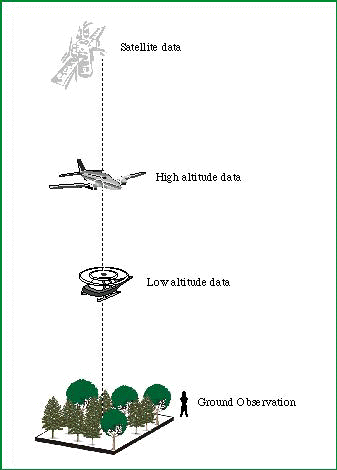Difference between revisions of "Remote Sensing"
From IMSMA Wiki
| Line 1: | Line 1: | ||
| − | + | [[Image:RemoteSensing.gif|350px|right]] | |
| − | + | :Remote sensing is the scanning of the earth by satellite or high-flying aircraft in order to obtain information about objects or areas from a distance. | |
| − | |||
| − | |||
In remote sensing, sensors are used to collect data and imagery. These sensors can be on satellites or mounted in aircraft or Unmanned Aerial Vehicles (UAV). | In remote sensing, sensors are used to collect data and imagery. These sensors can be on satellites or mounted in aircraft or Unmanned Aerial Vehicles (UAV). | ||
| Line 13: | Line 11: | ||
Data from remote sensing is also valuable for use in spatial analysis, providing data and information to further understand the situation of an area. | Data from remote sensing is also valuable for use in spatial analysis, providing data and information to further understand the situation of an area. | ||
| − | + | ||
{{NavBox Remote Sensing and Spatial Analysis}} | {{NavBox Remote Sensing and Spatial Analysis}} | ||
[[Category:PEW]] | [[Category:PEW]] | ||
Revision as of 15:14, 10 August 2016
- Remote sensing is the scanning of the earth by satellite or high-flying aircraft in order to obtain information about objects or areas from a distance.
In remote sensing, sensors are used to collect data and imagery. These sensors can be on satellites or mounted in aircraft or Unmanned Aerial Vehicles (UAV). Sensors can
- map out elevation of an area (lidar),
- penetrate through cloud cover (radar) and
- observe features and activity on the earth’s surface (optical).
Remote sensing has a wide range of applications for Mine Action. With the use of UAV’s or satellites, field teams can obtain current imagery of an area and assess the situation of an area remotely before going out in the field. Such imagery can also be used to assist in field data collection, providing an accurate representation of a contaminated area and up to date field maps.
Data from remote sensing is also valuable for use in spatial analysis, providing data and information to further understand the situation of an area.
| |||||||||||
